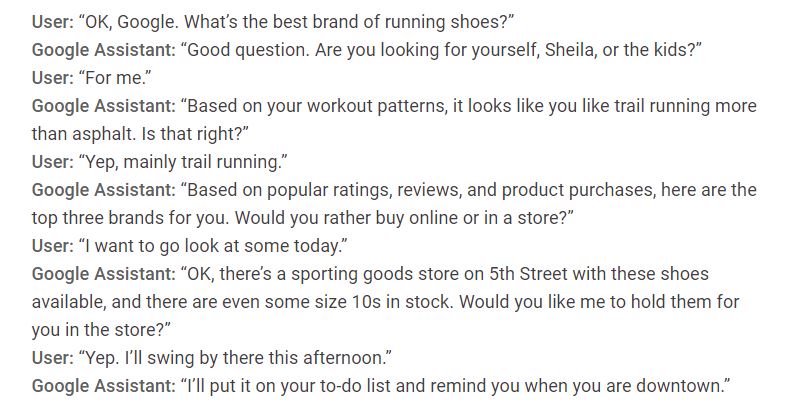How Voice Search and Digital Assistants Will Impact Brand-Customer Interactions
Seamless home automation is on the rise and digital assistants like Siri, Alexa, and Google Assistant have integrated into our everyday lives. 25.9% of households now have a smart home and the number is expected to rise to 45.5% by 2024. Voice search has also started to account for 20% of Google searches.
People have traditionally learned to succinctly express themselves in very few words to search engines. But voice searches and spoken language now allow us to connect with answers with more immediacy, convenience, and intimacy than text search can provide.
The way that people are seeking assistance is also changing. Mobile has conditioned consumers to turn to their devices in ‘I want to know’, ‘I want to go’, ‘I want to do’, and ‘I want to buy’ micro-moments and customers expect more meaningful brand experiences and personal interactions throughout their purchase journeys.

Voice searches are naturally longer and more conversational. When we voice search, we ask a query as though we are talking to a human. For example, rather than typing ‘coronavirus test’, people are more likely to ask, ‘how do I get tested for coronavirus?’
Google recently acknowledged the difference in tone by implementing the BERT update late last year. BERT stands for Bidirectional Encoder Representations and Transformers and the update helps Google to understand directional phrases, context, and conversational queries, and prepositions like ‘for’ and ‘to’.
Google’s public statement was:
“These improvements are oriented around improving language understanding, particularly for more natural language/conversational queries, as BERT is able to help Search better understand the nuance and context of words in Searches and better match those queries with helpful results. Particularly for longer, more conversational queries, or searches where prepositions like “for” and “to” matter a lot to the meaning, Search will be able to understand the context of the words in your query. You can search in a way that feels natural for you.”
Before the update, a search such as, ‘Can you get medicine for someone pharmacy’ would return a medical encyclopedia result about how to get your prescription filled. Google would miss the meaning of the question because prepositions were missing from the query.
Now the same query could return a FAQ result such as, ‘Can a patient have a friend or a family member pick up a prescription?’. Google now recognises that for someone is an important part of the query and can pick up on the nuances of the question as a whole.
The update makes search engines more functional and useful for conversational search queries. We can ask voice assistants more complex questions than ever before, and trust that the first result pulled from Google will be relevant.

Digital assistants are also already going beyond providing simple “request and response” features and have the ability to capture additional customer signals. We’re moving in a direction where the digital assistant moves beyond a reactive response based on user query and into proactive recommendations based on user context.
For example, in the near future a voice query about the best brand of running shoes could become a back and forth conversation in which the digital assistant factors in contextual knowledge about the user’s running patterns and shopping habits.

Voice interactions may currently revolve around everyday tasks like checking the weather or making calls. But in the future, we can expect that voice interactions will continue to become more meaningful and have more potential to drive brand growth.
To prepare, it’s essential to start predicting your customer’s needs and anticipating how you could assist them in daily micro moments. Leveraging available customer data to understand their context and intent during distinct decision-making moments is essential before designing assistive conversations across all channels.
While a well optimised FAQ page will help brands to meet longer-tail, conversational queries, the creative possibilities also extend further. What location, mood, or needs might your customer be experiencing in a specific moment and how receptive will they be? How should your messaging, segmentation, and ad spend adjust to this?
Brands can build a content strategy that assists the entire customer journey, from discovery to action, and optimise their digital experiences for how people use voice, providing insight for informational prompts (‘What is the best brand of paper towel?’) and utility for action-based commands (‘Order more paper towels.’).

The role of brands has always been to respond to customer needs. Now voice search and assistive technology are increasing the depth and intimacy of customer experiences marketers can help with.